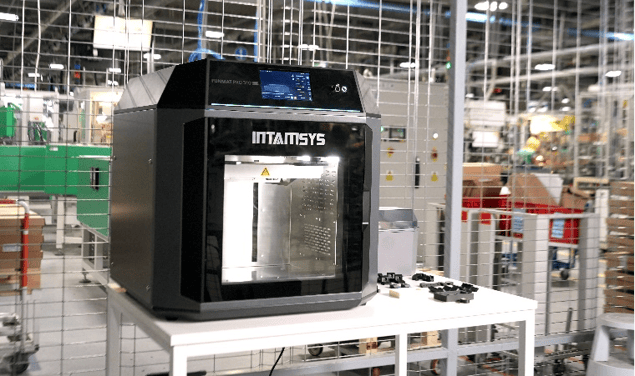Key Takeaways
Over the past few years, the global supply chain landscape has become increasingly complex and unpredictable. Shifting trade policies, geopolitical tensions, extreme weather events, and persistent labor shortages have converged to form a fragile and costly operating environment for manufacturers.
For example, the recent back-and-forth tariff adjustments between the U.S. and EU have made it difficult for businesses to forecast procurement costs. Geopolitical conflicts, such as the Red Sea shipping crisis, have forced cargo ships to reroute around Africa—lengthening delivery timelines and increasing transportation costs. Meanwhile, climate-related disruptions and customs bottlenecks have added further volatility and inefficiency.
3D Printing: A Resilient Solution for Uncertain Times
Localized, On-Demand Manufacturing
Industrial 3D printing, particularly with solutions from companies like INTAMSYS, enables manufacturers and service centers to produce parts locally—reducing reliance on overseas shipping and buffering against delays, tariffs, and logistics shocks.
For printing service bureaus, this local capability transforms them into distributed manufacturing nodes, capable of fulfilling urgent or customized orders across industries without long lead times.
Flexible Production, Minimal Inventory
Traditional supply chains often require stockpiling inventory to hedge against disruption—tying up capital and creating risks of obsolescence. In contrast, 3D printing supports on-demand, just-in-time production.
Printing service providers can hold digital designs and a select range of materials, reducing the need for physical inventory and enabling agile response to real-time client needs—from prototypes to low-volume series.
This lean approach not only lowers operational costs but also enhances return on investment (ROI) on each printer deployed.
Rapid Design Iteration & Customization
In volatile markets, product designs often need to adapt quickly. 3D printing removes the constraint of traditional tooling, enabling fast design iteration and customization.
For service bureaus, this flexibility makes it possible to offer engineering change orders and custom geometries without delay—adding strategic value to manufacturing clients and unlocking higher-margin applications.
 ▲FUNMAT PRO 610HT in 3D Printing Service Center of JLC
▲FUNMAT PRO 610HT in 3D Printing Service Center of JLC
Empowering Service Providers: INTAMSYS Technology + Global Support
INTAMSYS provides industrial-grade 3D printers capable of processing high-performance and engineering materials such as PC, ABS, PA-CF, PPS, PEI and PEEK, while maintaining dimensional accuracy and mechanical strength across full-format builds.
More importantly, INTAMSYS has built a global distribution and service network, ensuring local support for service centers across key regions.
With INTAMSYS’ digital manufacturing service platform, service providers can also receive distributed manufacturing orders without owning the full design or logistics process—lowering entry barriers while expanding addressable markets.
This integrated solution delivers three key advantages to service bureaus:
-
Broader customer reach: Serve clients in aerospace, automotive, electronics, and beyond
-
Agile order management: Fulfill single-piece, repair, or low-volume jobs with ease
Lower system costs: Reduce overhead with fewer fixed assets and faster project cycles

▲FUNMAT PRO 610HT in 3D Printing Service Center of JLC
Final Thoughts
In an increasingly unpredictable global landscape, 3D printing service providers are becoming indispensable partners in modern manufacturing. By adopting INTAMSYS’ high-performance printing systems and tapping into its service ecosystem, providers can:
-
Expand their service portfolio
-
Improve production efficiency
-
Enhance business resilience amid supply chain shocks
Explore how companies like Schneider Electric, JLC, Terrestrial X, and 4D Concept are already leveraging INTAMSYS technology by visiting our official case study collection.



Comments